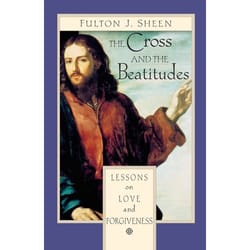
Dear Theophilus,
Apparently there is a web based movement to have the Catholic Church change the practice of receiving the Eucharist either on the tongue or in the hand to strictly receiving on the tongue. As Todd Flowerday at Catholic Sensibility points out, such a grassroots movement to have the Church change doesn’t really merit the dialogue. The Church will make its decisions based on the 2,000-year revelation of the Catholic faith – not on what a group of people with an internet petition want it to do.
For the record, the catechism does not state a preference for one method or the other for receiving the Eucharist. What the catechism does state on the issue of receiving communion can be found in paragraph 1387:
To prepare for worthy reception of this sacrament, the faithful should observe the fast required in their Church. Bodily demeanor (gestures, clothing) ought to convey the respect, solemnity, and joy of this moment when Christ becomes our guest.
Keeping this directive in mind, what does deserve our dialogue on the issue is the need to educate the laity on how to receive the Eucharist with the respect, solemnity and joy it deserves. In my experience as an extra-ordinary minster of the Eucharist (in both my parish and at catholic school Masses), these are some of the travesties I’ve come across”
- “The Body of Christ.” – “Yup!”
- Snatching the Eucharist from my hand.
- Popping the Eucharist with one hand – like popcorn.
- Filthy hands (dirt or ink).
- Intinction (dunking the Eucharist in the Chalice like a donut in coffee).
- Not immediately consuming the Eucharist.
Some of the most reverent receivers of the Eucharist are actually the children who have most recently been formed in catechism class. So, what has happened from childhood to adulthood to lose this reverence for the Eucharist and what can be done to rectify the problem?
A great place to begin is to reinculcate an understanding of Christ’s presence in the Eucharist. I recently came to a heightened awareness of the real presence in the Eucharist and was moved to tears at communion at Sunday Mass.
This education of the real presence needs to begin with the pastor; through homilies, bulletin articles and direct instruction at communion time. There also need to be, however, an accountability on the part of the laity to educate themselves. The Mass should not be a passive experience. The laity are called to be active participants in the sacrifice of the Eucharist. To be active participants, there must be some responsibility on their part to deepen their understanding of the sacrifice and real presence that is before them on the altar.






